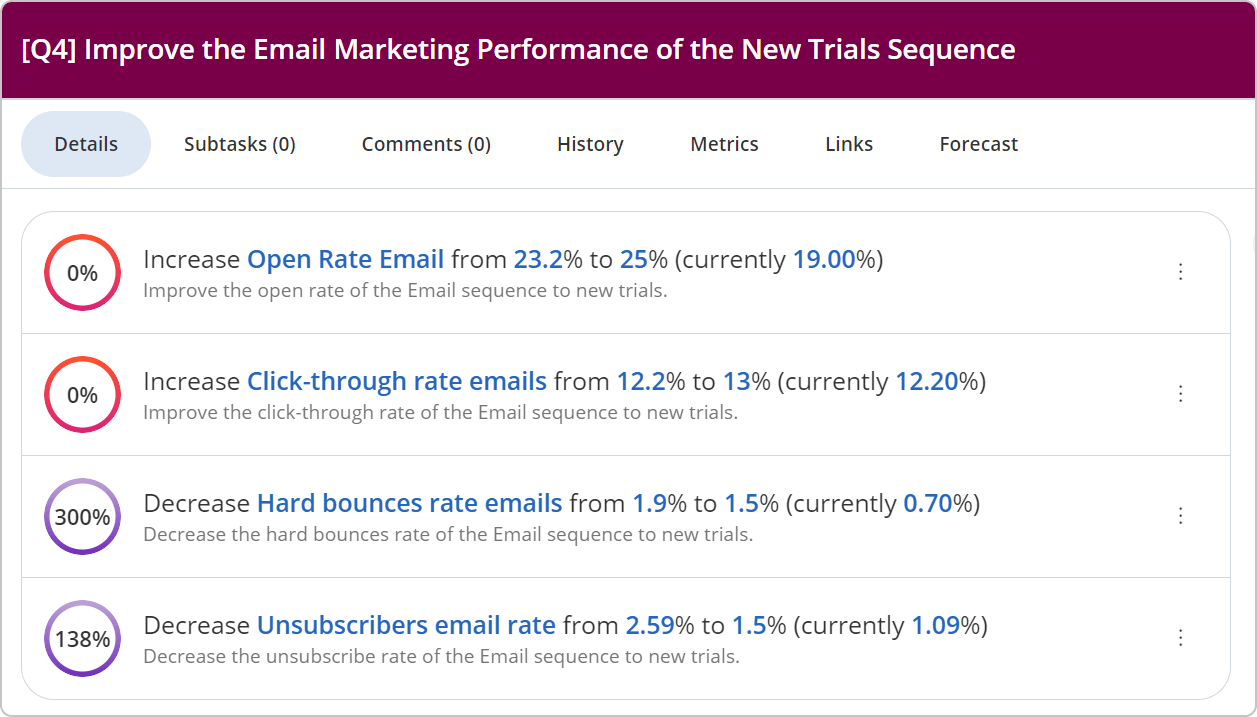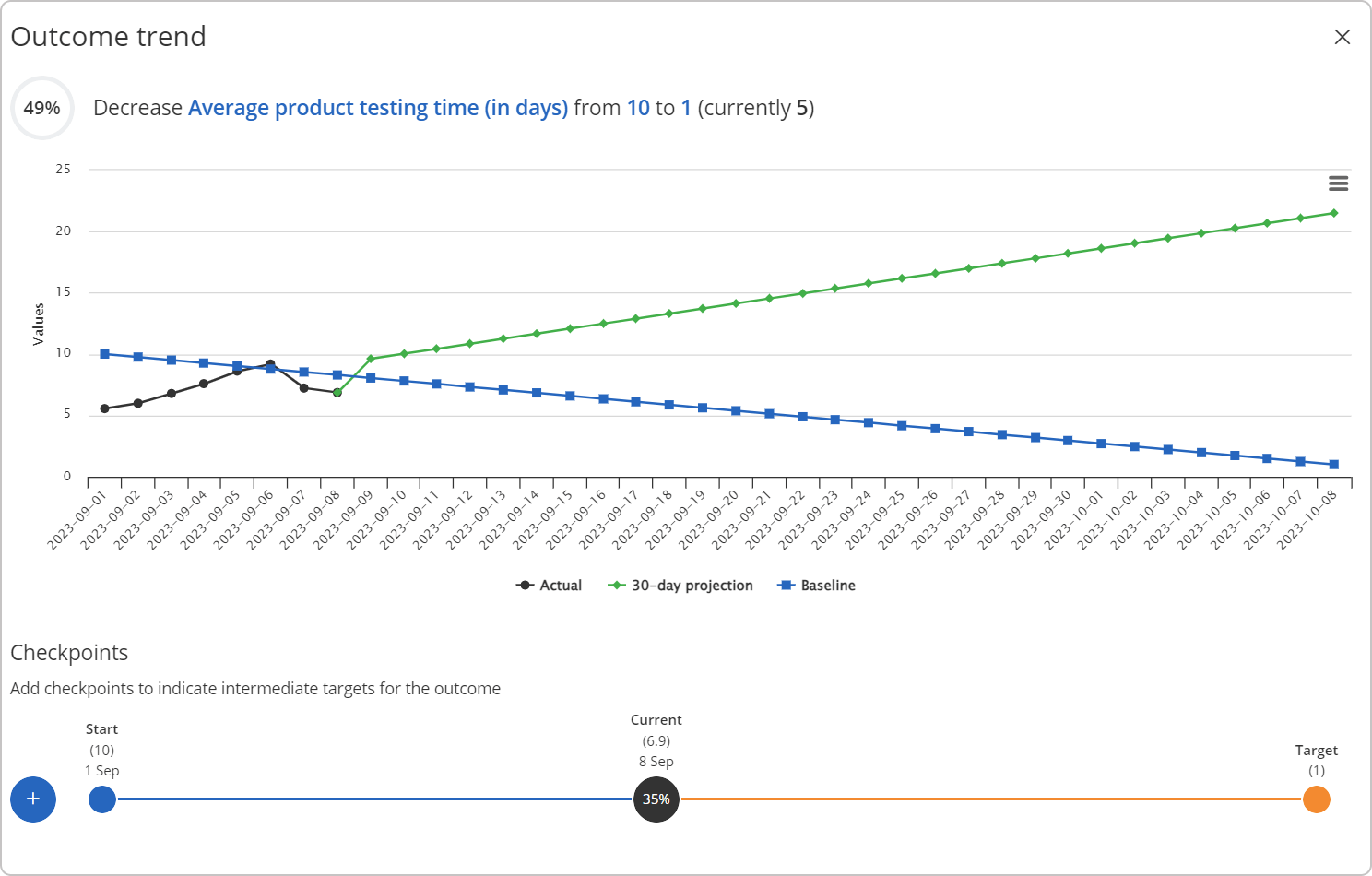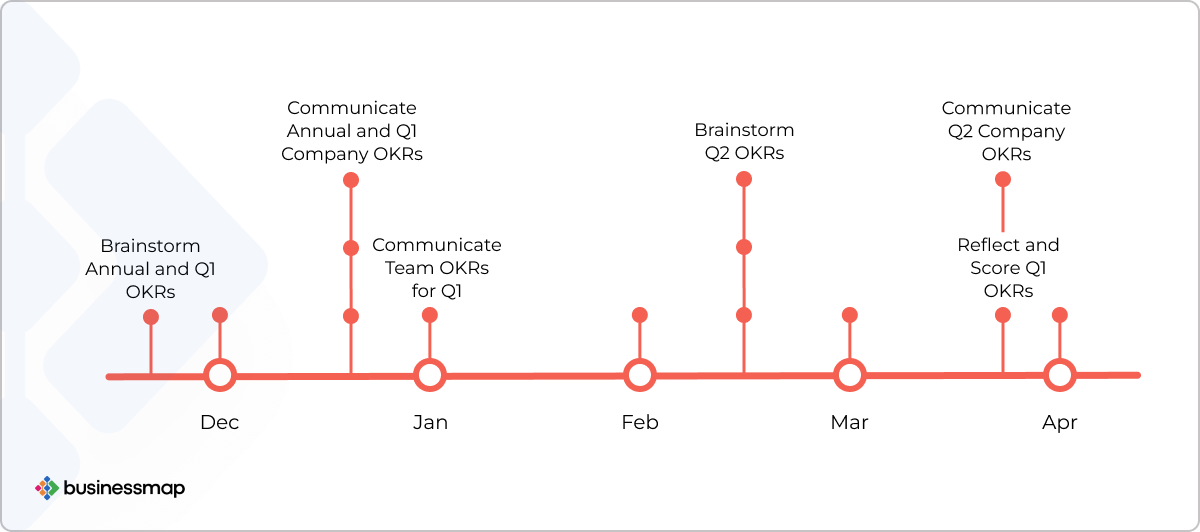In Measure What Matters, John Doerr famously compares OKRs to a Swiss Army knife - versatile, adaptable, and essential for navigating the complexities of any organization. Just like that multifunctional tool, OKRs can cut through the noise, providing a universal language for execution across all types of industries.
Whether you’re in a start-up using OKRs to laser-focus on survival or part of a large organization leveraging them to break down silos and spark innovation, OKRs are your ultimate guide. But effective OKR planning isn’t just about setting goals; it’s about building a dynamic process that sharpens clarity, aligns your team, and encourages fresh ideas. This is how organizations come together to achieve their most critical objectives.
In this blog, we'll explore what makes planning OKRs successful.
What Is OKR Planning?
OKR planning is a critical step in the OKR cycle where company or team-level objectives are created to align with the organization’s strategic goals. There’s no one-size-fits-all approach to OKR planning meetings; the process is adaptable and should be refined continuously. Involving executives, team leads, and members ensures the focus remains on the most impactful work.
If you’ve chosen to embrace strategic planning with the help of OKRs, effective OKR planning is vital. The OKRs you set will steer your company’s direction, helping you track progress, coordinate priorities across teams, and keep everyone focused on the most important goals.
OKR Planning Process: 5 Important Steps
When planning your OKRs, focusing on priorities that will deliver the most significant impact and align with the organization’s key initiatives is crucial. Here are five important aspects of planning OKRs that are effective and strategically aligned.
1. Define an Agenda for the Planning Session
Setting a clear agenda and informing participants of the meeting’s schedule and time frame in advance ensures that everyone arrives prepared. A well-defined agenda helps to keep the meeting focused and actionable, allowing room to address specific topics and ideas efficiently.
2. Clarify Your Company’s OKRs
Start by revisiting your company’s mission statement to align everyone from the start. A mission statement, often an inspiring, long-term goal, sets the tone for the meeting and helps guide the conversation toward defining long-term, achievable goals that support your strategy, translating into your quarterly team OKRs.
For example:
- Our Mission: "We discover new management ways and share this knowledge through amazingly powerful solutions that are easy to use."
- LinkedIn's Mission: "Connect the world's professionals to make them more productive and successful."
- Patagonia’s Mission: "We're in business to save our home planet."
3. Choose Priorities to Inform Quarterly OKRs
Before entering a new quarter, review the priorities that lie ahead. Reflect on the previous quarter’s performance to identify areas that need improvement. If specific goals were unmet, determine which operational initiatives need adjustment to inform your focus for the upcoming quarter.
For example, if you successfully achieved two of your email marketing OKRs for Q4 but fell short of increasing Open and Click-Through rates, those areas should become top priorities for the first quarter of next year.

4. Gather Feedback
After drafting the quarterly OKRs, share them with team leads and managers to gather feedback. This inclusive process ensures that team members see how their input influences the company’s tactical goals and fosters a sense of ownership and alignment.
5. Schedule OKR Reviews
OKR planning is an ongoing process that requires regular reviews. These reviews are opportunities to incorporate feedback and data, ensuring your OKRs remain aligned with reality and actionable. Regular OKR reviews help maintain alignment between your goals and daily operations, preventing strategic plans from deviating from execution.
Incorporating progress checks during these reviews allows you to monitor trends and measure progress effectively. The Businessmap's OKR software capabilities offer embedded outcome trend lines and checkpoints, enhancing your ability to track and adjust OKR progress throughout the quarter.

Best Practices for Annual OKR Planning and Review Cycles
John Doerr emphasizes that an OKR system should set objectives for relatively short periods. If you’re planning annually, your OKRs should be reviewed quarterly or monthly (Measure What Matters).
If you're planning your annual OKRs for the next year, here's how the cycle might unfold: In November and December, teams should develop plans for the coming year and break them down into OKRs. In January, leadership will define the high-level strategy and set the annual OKRs. After that, teams and individuals create, discuss, and review their OKRs, ensuring alignment with the overall strategy and other teams’ OKRs.

This approach aligns with findings from the 2023 OKR State of Industry Report, where over 60% of respondents reported that they plan, align, and publish their OKRs 7 to 10 days before the start of each quarter, ensuring a proactive and synchronized approach to goal setting.
When to Hold OKR Reviews?
The global survey on the state of OKRs revealed a notable increase in the frequency of OKR reviews. The percentage of respondents conducting monthly OKR reviews rose to almost 30% in 2023, up from 22.9% in 2022. Similarly, those conducting quarterly OKR reviews increased to 18.6% in 2023, compared to 14.5% in 2022.
Our cross-functional teams follow similar OKR review schedules. During our monthly reviews, we assess the progress of each team’s quarterly and annual OKRs, providing a clear snapshot of where we stand. Instead of fixating on numbers, we prioritize discussion and learning, following a 30% focus on metrics and 70% on insights and feedback. This balanced approach sets our OKR reviews apart from typical business meetings, making them more about growth and alignment than just tracking numbers.
This approach to OKR reviews tackles effective OKR planning by creating a continuous learning environment and ensuring the planning process remains dynamic and responsive. By regularly reviewing OKRs - monthly or quarterly - teams can quickly identify what’s working and what isn’t, allowing for timely adjustments to strategies and objectives.
The Importance of Assigning Weights to Key Results
Assigning weights to your key results is a powerful tool for improving your OKR planning process. Weights help you accurately assess the effectiveness of your efforts and make data-driven decisions. By understanding the impact of missing a key result score, you can identify potential issues in planning or execution, prompting timely discussions and course corrections during OKR check-ins.
For example, when a committed OKR is at risk of failing, it’s crucial to devise a rescue plan and adjust the frequency of check-in meetings based on factors like business needs, the gap between predicted outcomes and actual execution, or the team’s size and location.
In Businessmap (formerly Kanbanize), you can indicate the weight of your key results by setting a value that indicates how important a key result (outcome) is in relation to the other key results linked to the objective (if any).
Turning OKR Planning into a Powerful Tool for Success
Effective OKR planning is more than just setting objectives – it's about creating a process that continuously aligns your team, sharpens focus, and fosters growth. By following these steps, involving the right people, and regularly reviewing progress, you can ensure that your OKRs truly drive your organization toward success. The combination of strategic planning, regular reviews, and the thoughtful assignment of weights to key results makes your OKR process not just a goal-setting exercise but a powerful tool for achieving your most critical objectives.
Businessmap is the most flexible software, helping your company gain visibility across all projects/portfolios, align on goals, and deliver quality work faster.

Iva Krasteva
Content Strategist | Agile Practitioner | Kanban Certified
Iva is a Kanban-certified Agile expert with hands-on experience in SEO, content creation, and Lean practices. She has published dozens of articles on Lean, Agile, and Kanban practical applications. Iva actively promotes collaborative, flexible work environments and regularly shares process optimization insights through writing.



